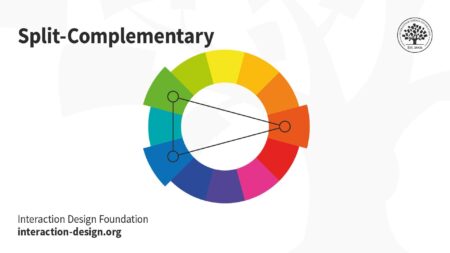Ethiopia Celebrates Completion of Grand Ethiopian Renaissance Dam, Ushering in a New Chapter for Nile Basin Cooperation
Ethiopia has officially declared the completion of its landmark Grand Ethiopian Renaissance Dam (GERD) on the Blue Nile, a project poised to transform water resource management and energy production across East Africa. This colossal hydroelectric dam, central to Ethiopia’s vision for economic advancement and energy self-sufficiency, has been at the heart of intense debates involving Ethiopia, Sudan, and Egypt. While Addis Ababa emphasizes the dam’s role in powering millions and boosting development, downstream nations remain apprehensive about potential impacts on their water supplies. As this milestone unfolds, it intensifies calls for constructive dialogue and regional collaboration to ensure equitable resource sharing amid growing geopolitical sensitivities.
Transforming Regional Water Management and Energy Landscapes
The completion of GERD marks a pivotal moment in harnessing the Nile‚Äôs resources sustainably while addressing East Africa’s surging demand for electricity. Designed to generate over 5,000 megawatts of clean hydroelectric power upon full operation‚ÄĒmaking it Africa‚Äôs largest hydropower facility‚ÄĒthe dam is expected to significantly reduce energy deficits that have long hindered economic growth across Ethiopia and neighboring countries.
This infrastructure achievement carries multifaceted implications:
- Enhancing Energy Security: By providing reliable electricity access to millions within Ethiopia and potentially exporting surplus power regionally, GERD could catalyze industrialization efforts.
- Advancing Integrated Water Resource Management: The dam introduces new dynamics requiring coordinated policies among Nile Basin states to optimize water use without compromising downstream needs.
- Fostering Hydro-Diplomacy: GERD presents an opportunity for riparian nations to engage in constructive negotiations around shared water rights rather than escalating conflicts.
| Anticipated Advantages | Challenges Ahead |
|---|---|
| Sustainable increase in electricity generation capacity | Tensions over altered river flow patterns affecting downstream users |
| Creation of thousands of jobs stimulating local economies | Diplomatic strains risking regional stability if unresolved |
| Improved irrigation potential supporting agricultural productivity | The necessity for binding agreements ensuring fair water distribution |
Navigating Complexities Among Nile Basin Nations: Challenges & Collaborative Pathways
The operationalization of GERD brings both promise and uncertainty across countries dependent on the Nile River system. Egypt‚ÄĒrelying on approximately 90% of its freshwater from the Nile‚ÄĒand Sudan express concerns about reduced flows during reservoir filling phases or drought periods. Conversely, Ethiopia views GERD as essential infrastructure that will uplift millions from energy poverty.
Key areas demanding attention include:
- Sustainable Water Allocation: Developing transparent mechanisms that balance upstream storage with downstream consumption needs.
- Ecosystem Preservation: Joint environmental impact assessments are critical given risks such as altered sediment transport affecting soil fertility downstream.
- Economic Integration: Exploring shared benefits through cross-border power trade agreements can foster mutual gains beyond mere resource competition.
Given these complexities, experts advocate establishing robust multilateral frameworks emphasizing trust-building measures such as:
| Cohesive Strategies Proposed   | Main Benefits   | |
|---|---|---|
| Bilateral & Multilateral Water Sharing Treaties    | A fairer allocation reducing conflict risk    | |
| Nile Basin Regional Power Pool Initiatives    | Catalyzing joint investments & grid interconnectivity    | |
| Sustained High-Level Ministerial Dialogues    | A platform ensuring continuous communication & dispute resolution   
Equitable distribution fostering trust     |
Environmental Considerations and Long-Term Viability of GERD Projected Through Sustainable Practices
As Africa’s largest hydropower endeavor completed recently in 2024 according to latest reports by African Development Bank,[^1] environmentalists continue scrutinizing its ecological footprint along one of the world’s longest rivers.
Concerns focus primarily on how altering natural flow regimes may disrupt aquatic biodiversity including migratory fish species vital for local fisheries; changes in sediment deposition patterns which nourish fertile floodplains crucial for agriculture; plus possible methane emissions from organic matter decomposition within stagnant reservoir waters.
To safeguard ecological integrity while maximizing benefits requires ongoing monitoring programs incorporating:
- Methane emission tracking coupled with mitigation strategies;
- Biodiversity surveys assessing shifts in flora/fauna populations;
- Liaison with affected communities ensuring social sustainability through participatory decision-making processes;
- An adaptive management framework responsive to emerging environmental data trends.
| Sustainability Factor |
n |
|---|---|
| Water Quality Monitoringn | Deploy real-time sensors throughout reservoir u0026 river stretchesn<\/ tr > nn |
| Biodiversity Conservation<\/ td > nn | nn<\/ tr >
Concluding Perspectives: Balancing Progress With Regional Harmony Along The Nile RiverEthiopia’s declaration marking completion signals not only national progress but also highlights complex interdependencies among riparian states sharing one lifeline ‚ÄĒthe mighty Nile. While this monumental project promises transformative socio-economic upliftment via expanded electrification benefiting over 60 million Ethiopians,[^2] it simultaneously underscores urgent imperatives: fostering transparent cooperation frameworks; mitigating environmental risks; respecting historical usage rights; all essential steps toward sustainable coexistence. In coming months ahead as filling operations proceed under international observation,[^3] diplomatic engagement will be paramount ‚ÄĒ shaping whether this engineering marvel becomes a beacon inspiring regional integration or a flashpoint exacerbating tensions. Ultimately,the future prosperity along these ancient waters depends heavily upon collective stewardship grounded in equity,respect,and shared vision. [^1]: African Development Bank Report (2024). “Hydropower Projects Transforming Africa.” |







